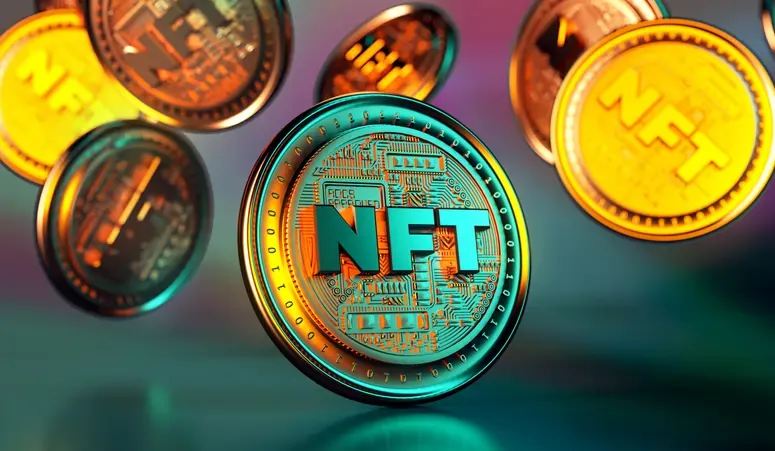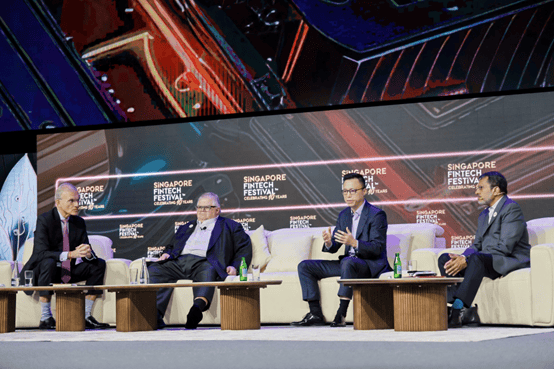
Nfts for beginners: a simple guide to non-fungible tokens
In recent years, Non-Fungible Tokens (NFTs) have witnessed an exponential rise in popularity, captivating the interest of investors, artists, and collectors globally. The surge in NFT adoption has paved the way for a paradigm shift in how we perceive and interact with digital assets. This comprehensive guide delves deeper into the multifaceted realm of NFTs, exploring their diverse applications, potential advantages, and addressing the nuanced challenges they present
Understanding non-fungible tokens
At its core, a Non-Fungible Token (NFT) represents a unique digital asset that cannot be replicated or replaced. Unlike cryptocurrencies such as Bitcoin or Ethereum, which are fungible and interchangeable, each NFT possesses distinct characteristics that set it apart from other tokens. These characteristics are stored on a blockchain, a decentralized digital ledger that ensures transparency and immutability.
How nfts work
NFTs are created and managed using blockchain technology, which allows for the creation of unique digital assets and the verification of ownership. When an NFT is minted, a digital certificate of ownership is generated and recorded on the blockchain, establishing the token’s authenticity and uniqueness. This certificate contains metadata that describes the NFT, including its creator, creation date, and any associated royalties or rights.
Applications of nfts
NFTs have a wide range of applications across various industries, including art, gaming, collectibles, and even real estate. In the art world, NFTs have revolutionized the way digital art is bought and sold, providing artists with a new platform to showcase and monetize their work. Similarly, in the gaming industry, NFTs can be used to create unique in-game assets that players can buy, sell, and trade with one another.
Potential benefits of nfts
One of the key benefits of NFTs is their ability to provide creators with a new stream of revenue. By minting and selling NFTs of their work, artists can bypass traditional intermediaries such as galleries or auction houses and directly connect with buyers. Additionally, NFTs offer collectors a way to prove ownership and authenticity of digital assets, potentially increasing the value of these assets over time.
Challenges and considerations
Despite their growing popularity, NFTs also present a number of challenges and considerations. One of the main concerns surrounding NFTs is their environmental impact, as the energy consumption required to mint and transact NFTs can be significant. Additionally, there have been instances of copyright infringement and plagiarism within the NFT space, highlighting the need for clearer regulations and guidelines.
Nft ecosystem dynamics
The ecosystem surrounding NFTs is dynamic and continually evolving. Beyond the realms of art and gaming, NFTs have found applications in domains such as music, virtual real estate, and even education. Musicians, for instance, can tokenize their music, providing a direct channel for fans to support their favorite artists and participate in unique experiences like exclusive concert access or limited edition releases.
Virtual real estate has become a burgeoning market within the NFT space. Blockchain-based platforms allow users to buy, sell, and trade virtual lands, creating a digital economy that mirrors the real world. The intersection of NFTs and education is also gaining traction, with the potential to tokenize educational certificates and credentials, ensuring secure verification and authentication.
Nfts and smart contracts
Smart contracts play a pivotal role in the NFT ecosystem. These self-executing contracts, coded on the blockchain, automate and enforce the terms of an agreement. In the context of NFTs, smart contracts govern aspects like royalty distribution, ensuring that creators receive a percentage of the resale value each time their NFT changes hands. This feature empowers artists and content creators, establishing a sustainable revenue stream beyond the initial sale.
Navigating challenges in the nft space
While NFTs present exciting opportunities, navigating the space requires an awareness of associated challenges. Scalability and environmental concerns have been raised, particularly in the case of blockchain networks with high energy consumption. As the popularity of NFTs grows, the industry is actively exploring more energy-efficient and eco-friendly solutions to mitigate its environmental impact.
Navigating intellectual property challenges is another consideration. The decentralized nature of blockchain can sometimes lead to disputes over ownership and copyright infringement. Establishing clear guidelines and regulations within the NFT space is crucial to address these issues and ensure a fair and transparent marketplace.
Emerging trends and future outlook
The NFT landscape is ever-evolving, with emerging trends shaping its trajectory. Virtual reality (VR) integration with NFTs is gaining attention, offering immersive experiences where users can showcase their digital art in virtual galleries or explore virtual worlds. Additionally, fractionalized NFT ownership is
an emerging trend, allowing multiple investors to collectively own a share of high-value NFTs.
Looking ahead, the future of NFTs holds promise for further mainstream adoption. The technology’s potential to democratize ownership and redefine digital value propositions suggests a transformative impact on various industries. As the space matures, collaborations between traditional and digital creators, as well as innovative use cases, are likely to propel NFTs into new dimensions.
Faqs
Can NFTs be used for physical assets?
While NFTs are primarily associated with digital assets, there is an emerging trend of tokenizing physical assets. This involves creating digital representations of real-world assets, such as real estate or luxury goods, on the blockchain.
What role do marketplaces play in the NFT ecosystem?
NFT marketplaces act as platforms where users can buy, sell, and trade NFTs. Popular marketplaces include OpenSea, Rarible, and Mintable, each offering a unique user experience and supporting various blockchain networks.
Are there risks associated with investing in NFTs?
Like any investment, NFTs come with risks. Market volatility, the popularity of the creator, and changes in demand can impact the value of NFTs. It’s essential for investors to conduct thorough research and make informed decisions.
How can I ensure the security of my NFTs?
Securing your NFTs involves using reputable digital wallets, enabling two-factor authentication, and being cautious about phishing scams. Staying informed about the security measures of the platforms you use is crucial for protecting your digital assets.
Non-Fungible Tokens (NFTs) have transcended their initial reputation as digital collectibles, evolving into a dynamic ecosystem with far-reaching implications. As users navigate the NFT space, a nuanced understanding of its applications, challenges, and emerging trends is essential. The journey into the world of NFTs is not merely about ownership but represents a transformative shift in how we define, value, and interact with digital and physical assets.


